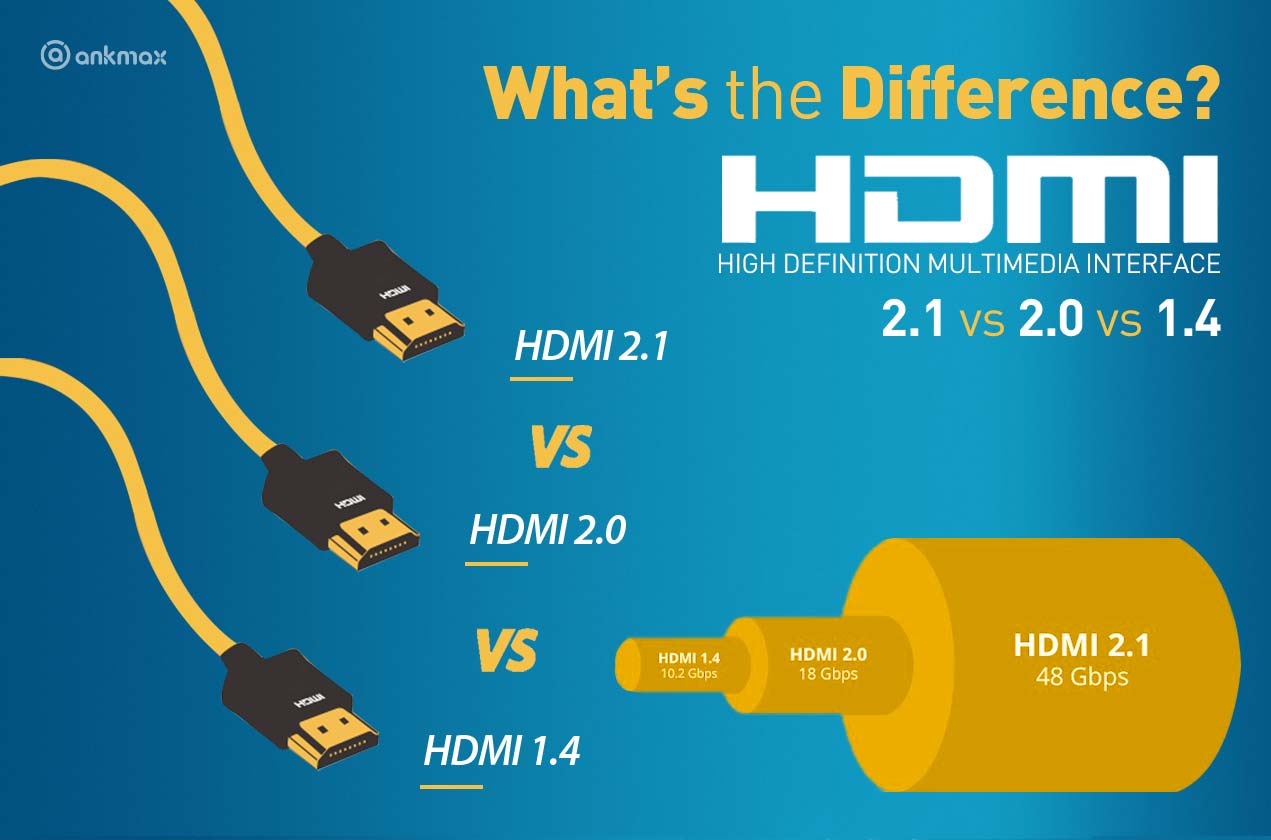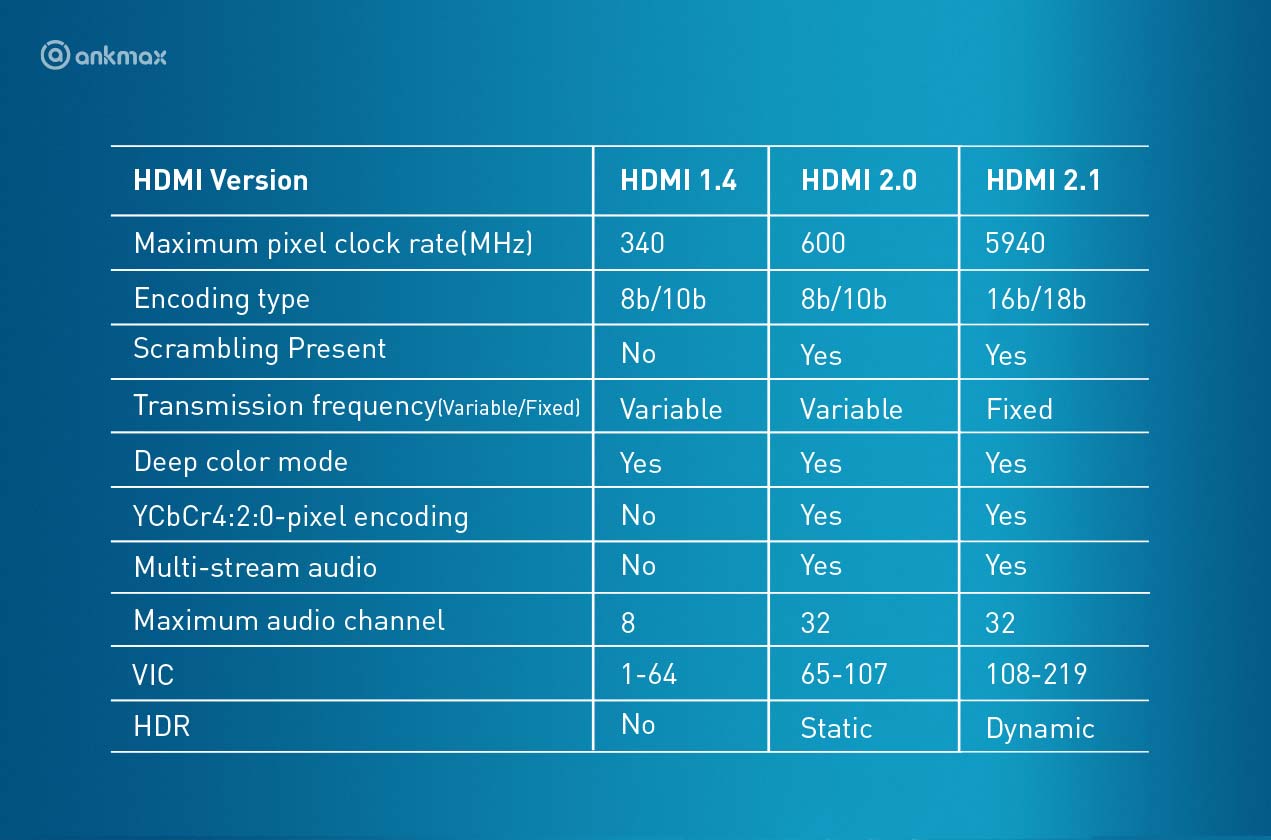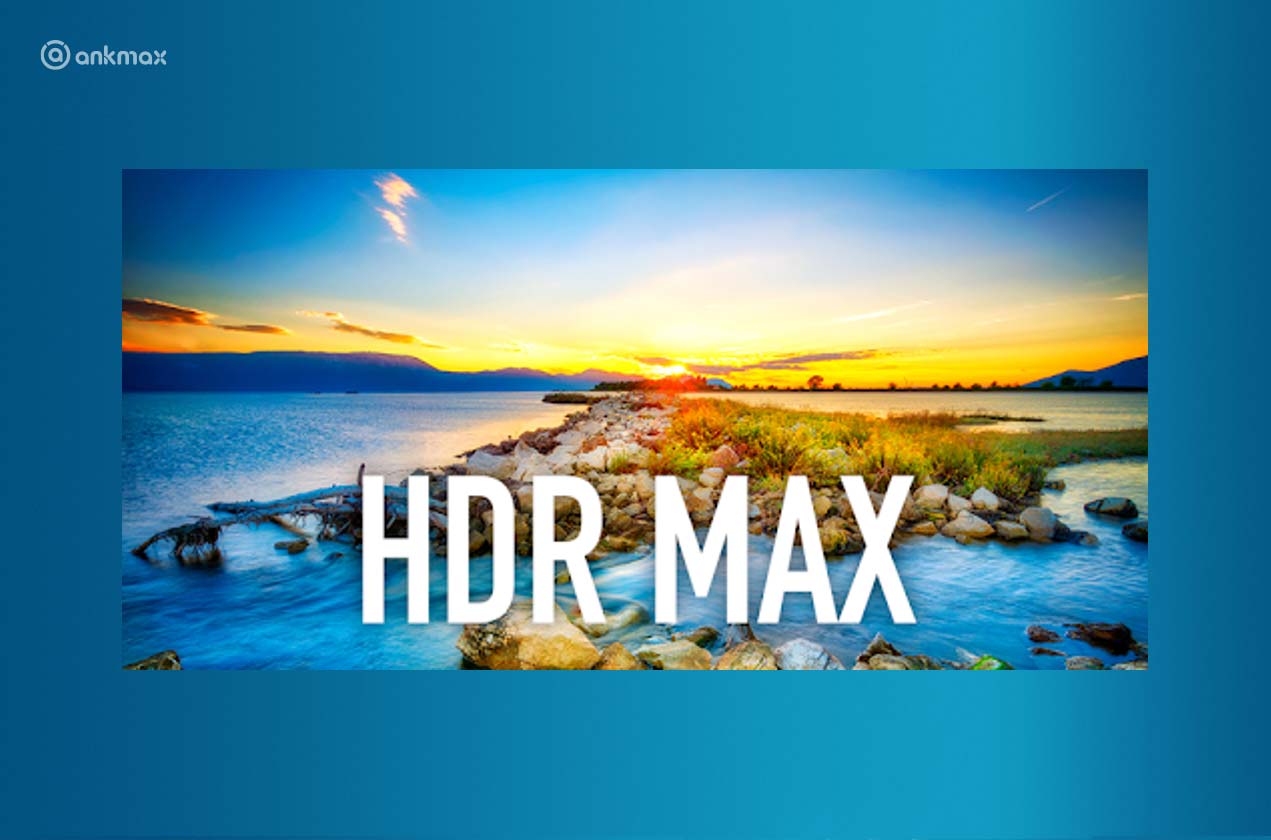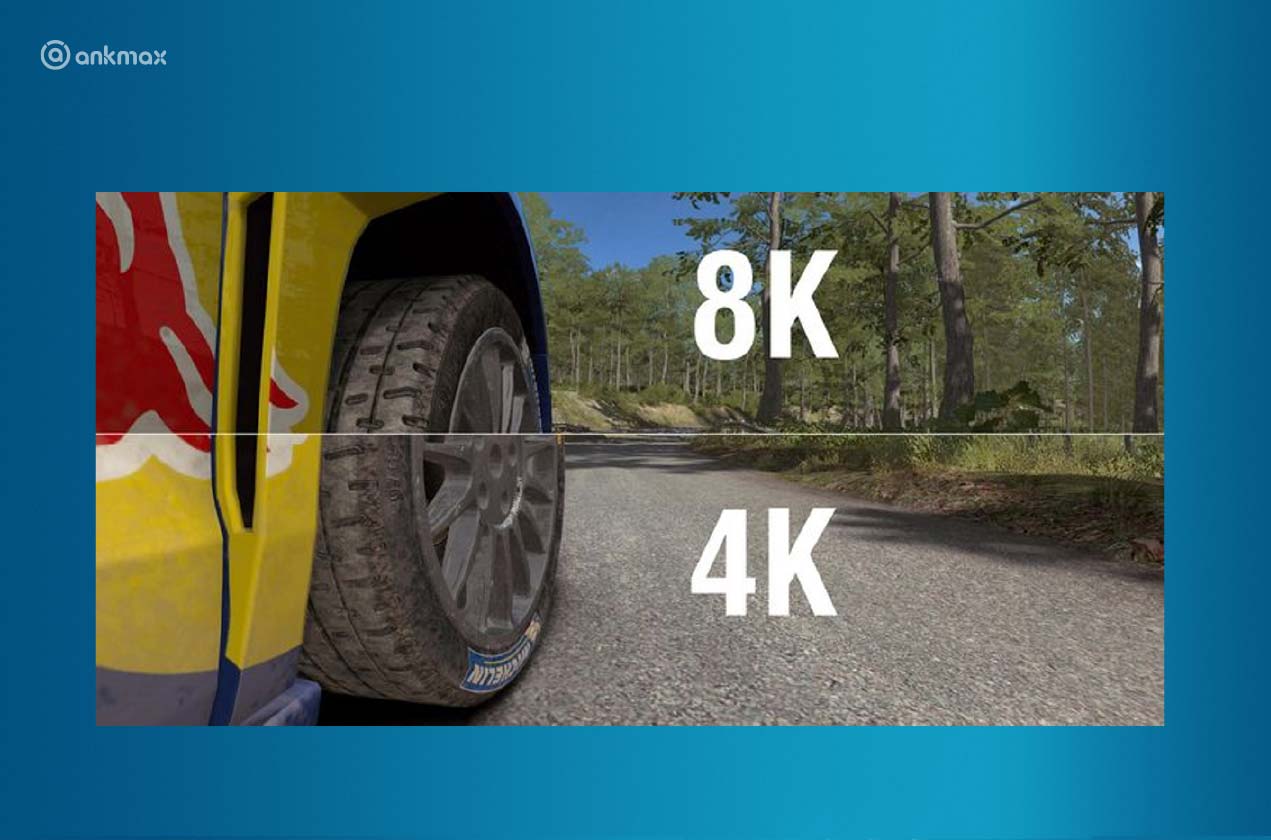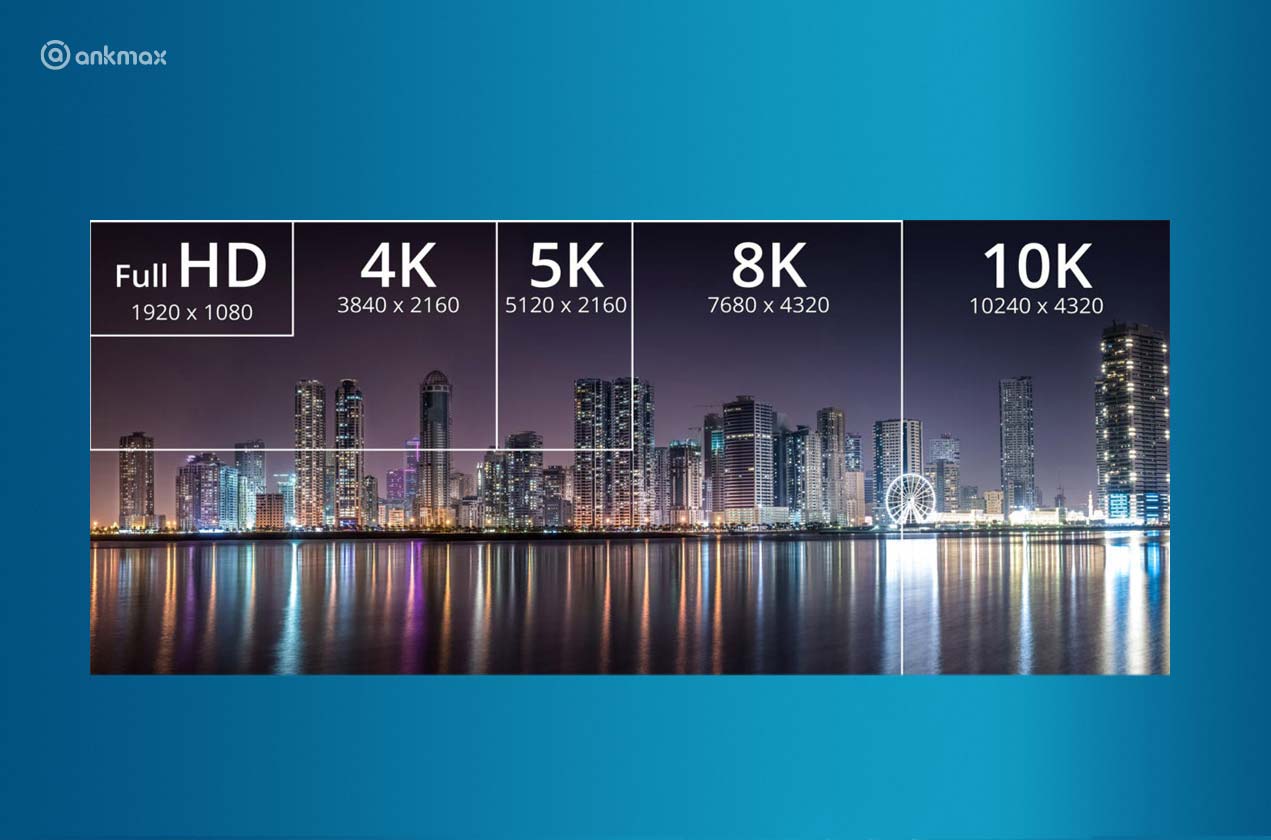HDMI 2.1 vs 2.0 vs 1.4 – What’s the Difference?
What is HDMI 1.4?
HDMI 1.4: Coming to the most used HDMI version in the market right now, the HDMI 1.4 was released back in 2009 and is still being used as a standard option for many devices. It also has 10 Gbps bandwidth speed with 48-bit color bit support. It added the functionality of an Ethernet channel using which you could share the internet connection. It also added support for 4K. But, it offers up to 2160p resolution at a 30Hz refresh rate and standard 1080p resolution output at 144Hz.
What is HDMI 2.0?
HDMI 2 is a faster version of HDMI 1.4, which is capable of supporting 4K at a solid 60 FPS and a bandwidth of around 18 Gbps. It also has support for 4K 3d as well. There are a total of 32 audio channels, which result in some immersive sounds. It can also offer dual-audio and multi-video streaming if necessary. Moreover, it supports the 21:9 aspect ratio as well.
What is HDMI 2.1?
HDMI 2.1 is the latest version of HDMI and one that improves upon HDMI 2.0 in every single way. It supports 4K at 120 Hz and 5K at 60 Hz. It nearly triples the bandwidth and offers around 48 Gbps. The extra bandwidth will be helpful for higher resolutions and refresh rates. It also makes it a viable competitor for DisplayPort. HDMI 2.1 has become the go-to choice for gamers.
What are the Differences Between HDMI 1.4, 2.0 and 2.1 Version?
• 4K – 4K transmission requires some serious bandwidth. In HDMI 1.4, the rate of 4K was limited to 24 frames per second.but HDMI 2.0 can dole out 4K video without compromise, at 50 and 60 FPS, while with a 2.1, you can run it at 120 FPS. This results in a much smoother experience. This is possible due to the significantly higher bandwidth in HDMI 2.1.
• Max HDR – HDMI 2.1 was brought out keeping in mind HDR 10+. HDR10+ offers a picture quality that is far superior to regular Television. As a result, you need to make use of it. HDMI 2.0 can also handle HDR10+, but it is well-suited for the purpose.
• 8K – After 4K, the next big thing is 8K technology. There is already a lot of hype surrounding 8K, and for good reason. HDMI 2 cables can handle 8K at 30 FPS, but HDMI 2.1 can support 8K at an incredible 60 FPS. Additionally, it can support resolutions up to 10K.
• Requirement of new hardware – You can connect HDMI 2.0 cable to a 2.1 port and use it as it is. However, you won’t be able to access the higher speed and bandwidth. Similarly, a 2.1 cable can be connected to an HDMI 2 device, but the bandwidth will be restricted.
• Gaming – Gamers will benefit massively from HDMI 2.1. Now, you can stream and play games at 120 FPS, even in 4K. The higher fps would certainly be helpful in online games. Moreover, it also has support for variable refresh rate, a feature that eliminates screen tearing, and also Low Latency mode. HDMI 2 can only run 4K at 60 fps.
• Variable Refresh rate – Variable Refresh Rate is a feature that makes gaming much smoother. While gaming, there is a possibility for fluctuating fps. If the refresh rate is constant, this would cause screen tearing. However, VFR eliminates that issue.
• VR compatibility – The latest version of HDMI is much better suited for VR purposes. HDMI 2.1 uses the quick frame transport technology, which reduces lag in VR. As a result, it takes less time than HDMI 2.0 to convert the video into display.
• Audio Experience – HDMI 2.1 supports eARC technology, which is an improvement on the ARC technology found in 2.0. The big difference is in the bandwidth. As a result, eARC can handle formats like DTS:X and DOLBY ATMOS that are not possible in HDMI 2.
• Switch between media – The quick media switching function available in HDMI 2.1 means that you won’t experience any more black screens while changing between console and other media devices.
• Future Proof – If future-proofing is an important aspect, then HDMI 2.1 is the much better option. It is much better for transmitting 8K content and can support even 10K. On the other hand, HDMI 2.0 cannot process anything higher than 4K.
Conclusion
HDMI 2.1 is undoubtedly the much better option for the future. It has much better bandwidth and offers many other cool features not available in HDMI 2. However, as of right now, there is no need to discard your 2.0 cables. HDMI 2 still does a great job with 4K content, and until 8K technology becomes accessible to the common people, there is no rush to upgrade.
HDMI 2 is best used when transmitting anything under 4K. For these resolutions, using an HDMI 2.1 is unnecessary. If you have a 4K system and are interested in gaming, then HDMI 2.1 would be better for you.
Related Articles:
Apple’s new M1 Pro/Max MacBook Pro features HDMI 2.0 and not HDMI 2.1

